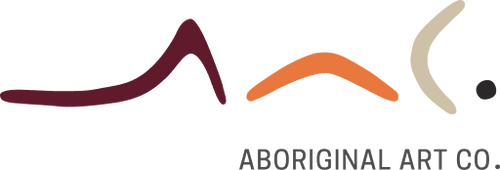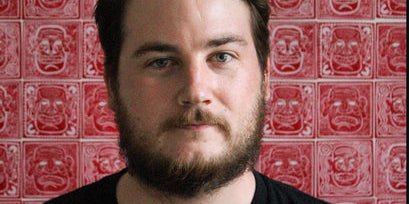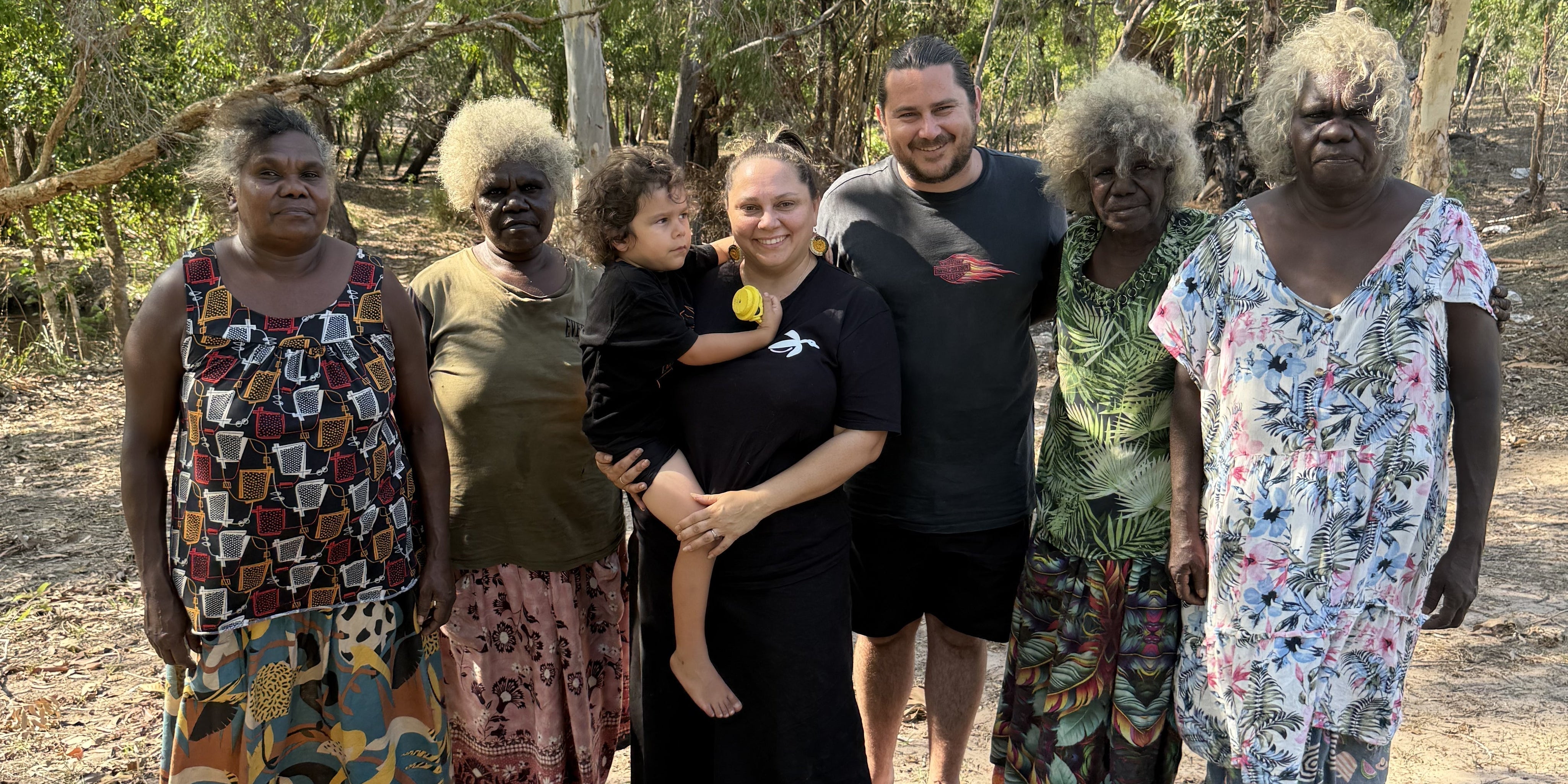Visiting Bula’bula Arts in Ramingining

Last October, I had the rare and deeply enriching opportunity to visit Bula’bula Arts in Ramingining for a weaving project. This journey not only expanded my appreciation for fibre art but also deepened my connection to the stories and traditions embedded in every weave.
I travelled with my partner, Troy, our four-year-old son, Charlie, and our friends and colleagues, Tahlia and Zac. From Brisbane, we flew to Darwin, then hired a 4WD to take us deep into Arnhem Land. The drive itself was an adventure—long, dusty roads cutting through some of the most beautiful and untouched landscapes of the Top End.
A Quick Stop in Jabiru
A few hours into our journey, we made a quick stop at Marrawuddi Arts & Culture in Jabiru. This vibrant space showcases incredible local artworks, and it didn’t take long for us to be drawn in. Charlie, who is absolutely obsessed with superheroes, was captivated by Ray Mudjandi’s work, which blends comic-book-style characters with traditional storytelling. While chatting with the arts workers and soaking in local knowledge, Troy and I took a quick lap of the shop, snapping reference photos of pieces we might order for the gallery. After grabbing a kids’ Ray Mudjandi’s T-shirt, a round of coffees, and a juice for Charlie, we hit the road again.

Arriving in Ramingining
Five hours later, we finally arrived in Ramingining, welcomed with open arms by Bula’bula’s Art Centre Manager, Mel. Despite the late hour, her warmth made us feel immediately at home as she set us up in the local accommodation.
The next morning, we started early, meeting Mel at 8 a.m. for a tour of the art centre. Bula’bula Arts has a long and proud history—it was founded in the late 1970s by Djon Mundine and has been a creative and cultural hub ever since. The two-storey building is well-designed for the artistic process: downstairs is a space for preparing pandanus and large-scale works, while upstairs houses a gallery, shop, and painting studio. Ramingining is also the birthplace of the iconic Australian film Ten Canoes, and Charlie was fascinated to find stickers on the ground leading to a museum-like loft dedicated to the movie.
Bula’bula Arts represents over 150 artist members from Ramingining and surrounding outstations in North East Arnhem Land. Its name, given by local artists in 1989, means “the voice of the Garrtjambal,” or red kangaroo, symbolising the song cycle that tells of its journey from the Roper River to Ramingining.

Learning the Art of Weaving
Mel introduced us to the talented weavers we’d be learning from—Cecil, Malinda, Yvonne, and Mary. These women carry deep knowledge of fibre art, passed down through generations. While they weave with a variety of locally sourced materials, our focus would be on pandanus—a plant deeply embedded in Yolŋu culture.
Early morning is the best time to work before the heat becomes too intense, so we set off to forage. Although pandanus palms line the roads, finding the right ones for weaving requires a trained eye. We drove 15–20 minutes out of town to a spot where the leaves were fresh and new. The women, armed with hook sticks—long branches with a natural V at the end—expertly tugged at the treetops, bringing down bunches of leaves with precision. Each of the women found a tree, gathering our own bundles to carry back to the car.
The next step was root collection—an entirely different process. Roots are essential for dyeing the fibres, and sourcing them meant heading to a different location. This time, the women used shovels, disappearing into the bush to dig. They made the hard work look effortless, unearthing roots with skill and ease.
Back at the art centre, the real transformation began. The pandanus leaves had to be stripped of their sharp edges, split down the centre, and bundled. These strands were then boiled with the roots to extract natural dyes. Depending on the materials used, the fibres could turn vibrant shades of yellow, red, or earthy tones. Once cooled, they were ready for weaving—or they could be dried and later rehydrated for use.
Watching the weavers work was mesmerising. Though they shared common techniques, each woman had her own distinct style. After spending just a few days with them, I began to recognise their individual artistry—just as you would with a painter or sculptor. The rhythm of their hands, the tension in their weave, the subtle choices in pattern and form—every piece carried the unmistakable signature of its maker.

A Journey to Remember
Our trip was brief, but it left a lasting impact. Travelling with our son to remote Aboriginal communities, meeting incredible artists, and immersing ourselves in cultural knowledge was an experience we will always treasure. It was a privilege to witness firsthand the deep cultural traditions being kept alive through art, storytelling, and connection to Country.
This trip was made possible by Blaklash, and we are incredibly grateful to Bula’bula Arts—especially Mel, Hannah, and Andrew—for their hospitality and generosity. Most importantly, we extend our heartfelt thanks to Cecil, Malinda, Yvonne, and Mary, who shared their knowledge, skills, and stories with us. We can’t wait to visit again.

Bringing Arnhem Land to Brisbane
Before we left, we had the opportunity to select some incredible artworks from Bula’bula Arts to bring back to Brisbane. Our store now features a beautiful collection of 30x30 box-framed paintings, hand-printed fabric pouches and bags, and unique woven pieces like mats and fish. Each item is a testament to the artists’ craftsmanship and cultural heritage.
If you’d like to experience the beauty of these works, visit our store or browse online. Every purchase directly supports First Nations artists and helps keep cultural traditions strong.
Discover more in our shop! See the Journey through Arnhem Land collection.
If you enjoyed this, read the next blog about the journey on to Maningrida Arts and Culture and our journey home.
Written by AAC Managing Director, Amanda Hayman


